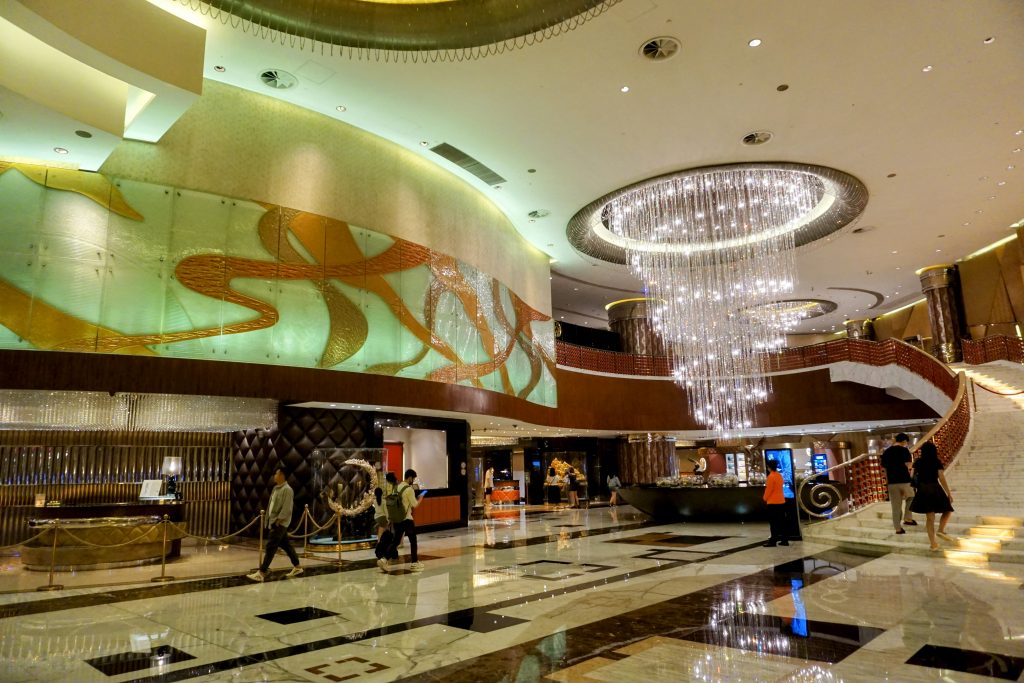When I tried to book a ferry from Hong Kong to Macao Outer Ferry Terminal, there was only one sailing with places available — and that was at 2330!
I hadn’t thought about booking ahead because I thought I might be staying in Hong Kong a little longer.
There was an alternative: the ferry to Macao’s Taipa Ferry Terminal, which turned out to be about 45 minutes from the ferry terminal closest to Macao’s city centre. For that ferry, there were lots of places and I was easily able to book it.
When I got to the Honk Kong ferry terminal, I saw that there were, in fact, no ferries to the Macao city centre ferry terminal because there was work going on and all sailings had been cancelled apart from the one at the end of the day that I saw.
I was glad I’d booked ahead because there was quite a queue at the ticket office. It was still the big Labour Day holiday period. Many of those queueing, going by the absence of luggage, were day trippers.
Going through customs was quick and it was as if I weren’t going to another country. The trip was over in less than an hour. No wonder there were so many day trippers.
On the bus journey to the city centre, I saw some fascinating buildings on the Taipa side. It was on the more modern side of Macao. I thought to myself that I must return to look at the architecture.
After checking in, I walked the 10 minutes it took to get to the town centre. Some of the architecture had a Portuguese influence. It was strange to see signs in Chinese, Portuguese and, occasionally, English.
Macao is where wealthy Chinese and Hongkongers come to gamble. Looking at the buildings, I could see that casinos had put the bling in gambling. Everything was shiny, with lots of gold.












All roads seem to lead to Senado Square. It has been the centre of Macao since the 16th century. Many public events take place there. The square is paved with black and white cobbles forming a wavy pattern, giving it a distinct Mediterranean feel.



